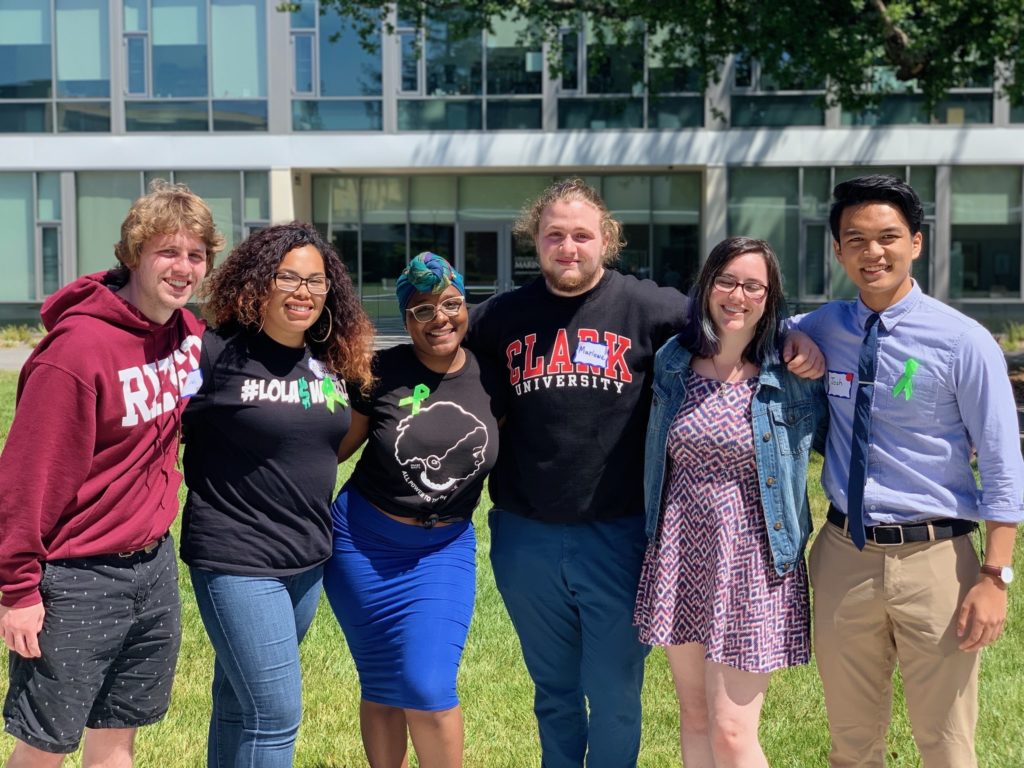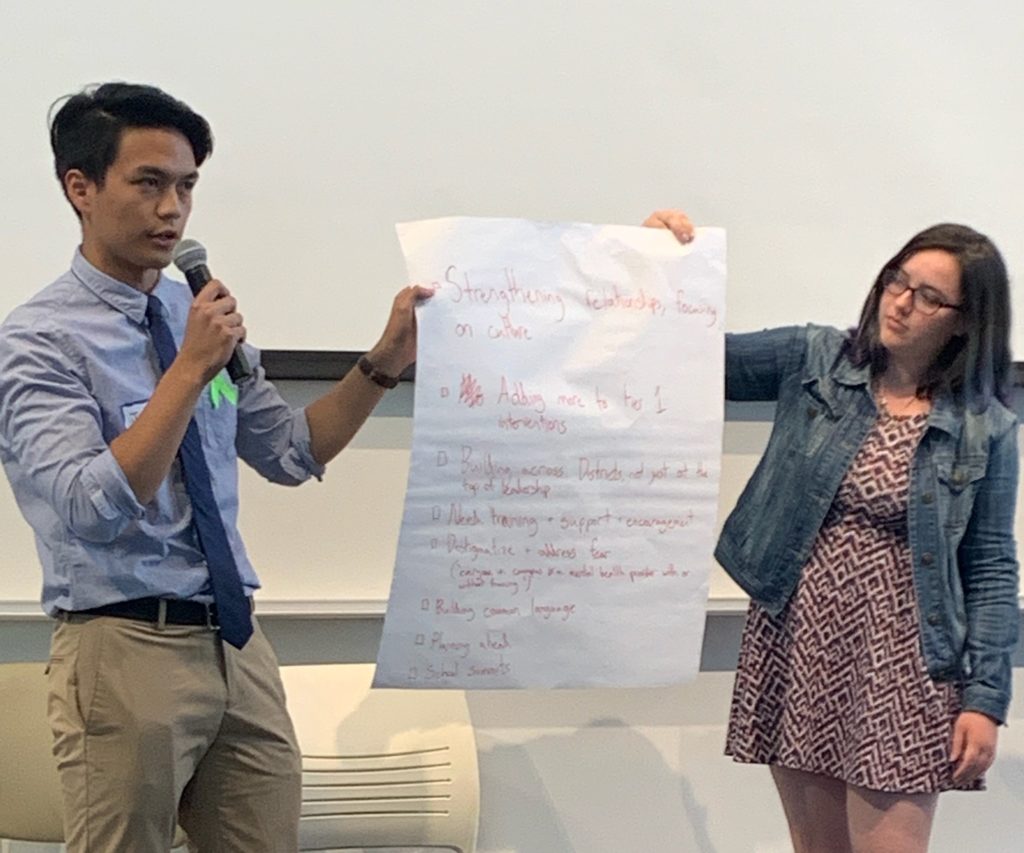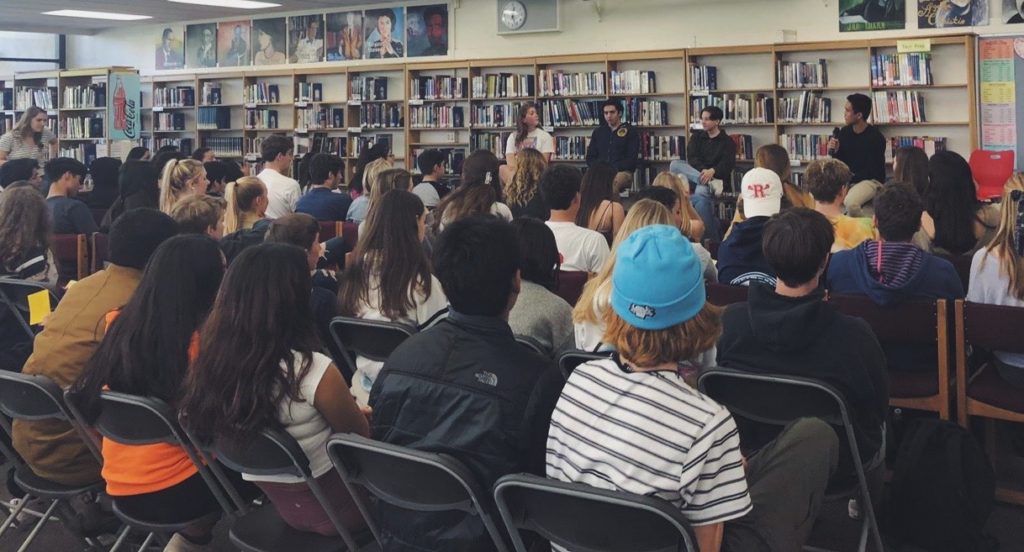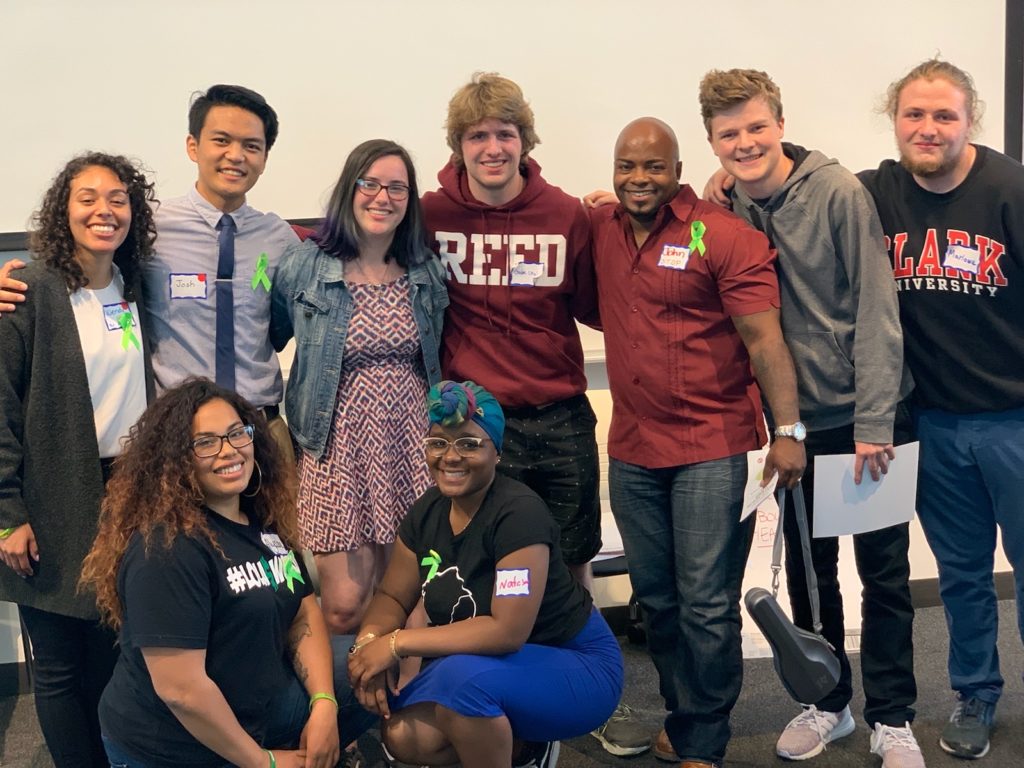A core belief of Youth Leadership Institute is that there can only be true justice and community change if those most affected are a part of decision-making. Young people must have a place “at the table” in order to make our communities places where everyone has the opportunity to thrive. It is yli’s job to run programs and trainings to make sure that young people are included at the table as often as possible so that youth voice will shape the future we are building together.
Read Joshua Chan’s story below, and consider investing in youth at the table this holiday season. Click here to contribute!

When I joined the Marin County Youth Commission, I immediately signed up for the mental health subcommittee. Ever since middle school, I grew up around friends who dealt with depression, anxiety, and substance abuse. I witnessed their struggles firsthand. Often, they would come to me for help, and I just didn’t know what to do. Over the years, more and more and my friends talked to me about their problems. Every time, I wouldn’t know what to say. So I just listened. I felt like my lack of knowledge was preventing me from doing more to help.
In my junior year of high school, I had done a project on teen depression in the county. The numbers scared me. It wasn’t just my friends who were dealing with these issues – teens everywhere were. Mental health is a massive-scale issue felt across the county and even the world. That pushed me even further to start getting involved. At the time, I was inexperienced, but I was willing to grow into a person who could truly make an impact.
The three other youth on the committee – all seniors at the time – had already started organizing a mental health summit. There had been a recent suicide at their high school, and they were frustrated by how the administration had responded to the situation. They felt like the issue was brushed over. They felt like it was not properly addressed or debriefed. And they didn’t want this to happen again. They wanted to talk about what was wrong and how we could make it better.
What we really wanted, we decided, was to put this issue on the map, to get these hard conversations started in our communities.
One of our first steps was to reach out to Kelli Finley, the Executive Director of the National Alliance on Mental Illness. We quickly became close and she connected us with different speakers. We consulted with her throughout the planning process about how we wanted the summit to look. We wanted it to be youth-centered, with personal stories that could grab the audience’s attention, and then add in presentations from mental health professionals, who could offer the facts. We wanted it to facilitate discussion.

We were able to get funding from the Marin County Board of Supervisors to cover planning, food, and other costs. The College of Marin offered us their lecture hall. We invited speakers from around the county, organized a panel of youth to talk about their experiences, and had break out groups on specific topics. Over 150 people attended: parents, students, mental health professionals, local elected officials all gathered to listen to young people talk about mental health. People were still talking about it months afterwards. The Marin Independent Journal wrote an article about it. It did just what we set out to do: get people talking about mental health.
It gave me a lot of confidence, knowing that I was able to set up something that big – that I’m capable of doing something like this. I hadn’t done anything large-scale before. I felt lucky to work with the yli staff, who let us do the thinking and planning. Our adult allies acted as good consultants – giving advice – but not taking over our vision.
That same year, I started a club for mental health awareness at my school, which was written up in Redwood High School’s student paper, Redwood Bark. We organized a couple of small events, like Stress Relief Week. We brought in therapy dogs, stress balls, handed out self-care kits to students during lunch, and passed out lime green ribbons to show solidarity around the issue. After talking with a few parents, we were able to bring in two designated therapy dogs to visit campus on a weekly basis for next year.

A month before the pandemic shut everything down, our club organized a student speaker panel. Three classrooms – around 80 students – met at the library to hear club members talk about the stress they experienced in high school, their support systems, and how they overcame it. I moderated, asking questions about how they got through it. As they were speaking, I was watching the audience. I thought they’d tune out, but they were locked in, listening to what the club members were saying. I could tell it was resonating with them. When we asked for feedback after the panel, so many students said, “I resonated with that,” or “I know friends who have dealt with what these speakers went through.” Hearing this, I knew the project was a success. After all, the goal of this event was to let students know that they weren’t dealing with these issues alone.
Then the pandemic hit.
The Youth Commission had wanted to do a second annual Summit. We had already done the bulk of the planning and had gotten several speakers. We were heartbroken. However, we didn’t want to end our terms without doing anything. Instead, we held a mental health series online – a Youtube and Instagram video series.
We talked mainly about mental health in the pandemic and the importance of keeping a tab on your wellbeing throughout quarantine. Across both instagram and youtube, we were able to reach thousands of people with our content. In fact, we may have reached more people doing this than if we had done another in-person summit.
It’s so important that we started this conversation, because we’re the ones being affected. These issues relate to us – we see our friends struggling – so it only makes sense for us to be in the room to talk about them. I remember when my school was going through budget cuts in my junior year. The first thing they wanted to cut was school therapists. I had just started the mental health awareness club, and when we heard, we were shocked. We talked to some of the therapists and found out that they work with over 500 students in the district. And they said that the issues these students talk to them about are not small – they really need these services. For many of them, they don’t have other people in their lives who they can talk to without feeling like they’re in danger.
We found out that the school was going to hold a budget meeting. It was right in the middle of the school week. So, we posted on social media asking people to show up and speak out. Dozens of students showed up, many of whom I didn’t even know. They had all been helped by the therapists. I keep remembering this girl on the mic saying that if it weren’t for the help of these therapists, she might not be here today. It reinforced everything I’d been working towards.
I went home thinking that nothing would come out of it. But when I talked to the Wellness Coordinator the next week, I learned that the school board had drastically reduced the cuts. From the planned 50% reduction, they decided to cut only 20% of the therapists. Word got around the school, and the School’s Parent Foundation decided to cover the remaining 20%. It was students telling their stories that made people realize just how important these services are. It was powerful.

After talking to a lot of adults – and I mean a lot of adults – I’ve realized that most of them don’t have bad intentions. However, there is sometimes a strong disconnect in their understanding about what would actually be helpful for youth. With the budget cuts for example: they just didn’t understand how important these services were to us. And this isn’t just true of adults. Before listening to my friend’s stories, I didn’t have much of an opinion about mental health. Only after listening did it occur to me that this issue shouldn’t be taken for granted.
Bringing youth to the table is so important: we can offer new perspectives to decision-makers. Representation from youth should happen in all places where youth are being affected. It just makes sense to have people who are impacted be in the room. We need more opportunities to be at the table in meaningful ways – if I wasn’t part of the Youth Commission, for example, I don’t know if I’d be able to make this much of an impact. My passion would have remained the same, but the program sharpened my skills and allowed me to flourish.
